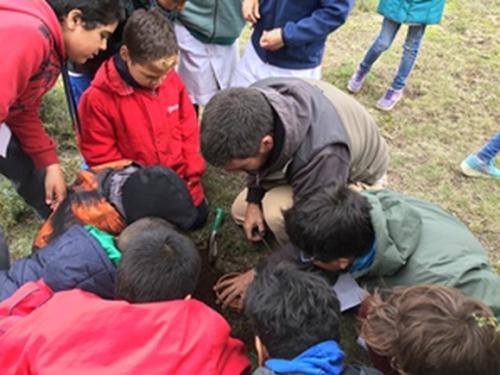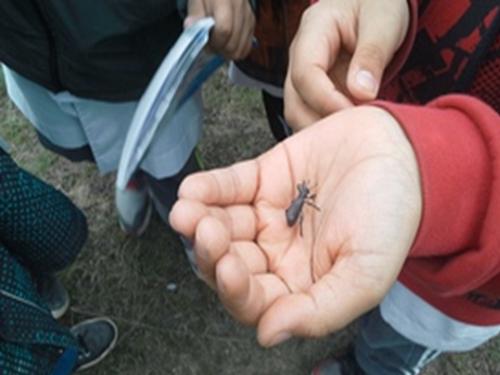Article featuring the project on the Univeresity of Chile website.
Alejandro Huertas, a MASCN graduate, was awarded the Rufford project
7 Dec 2015 Tolhuin, Argentina, Central and Latin America Forests | Communities
The aim of this study is to define which states and transitions of ñire forests undergoing to the differential impact of livestock is the best at maintaining the biodiversity.

Trekking with guest speakers (learning how to monitor forest).
Tierra del Fuego hosts the world’s southernmost forested ecosystems, and one of the last remaining wilderness areas on the planet. The deciduous Nothofagus Antarctica (ñire) are present throughout, consequently are a unique environment. Ñire forests have been associated with many ecosystem services, such as water regulation and conservation of biodiversity, soil and water quality, among others. Nevertheless, these forests are severely under-represented in state protected areas, necessitating their management with sustainable criteria since they almost exclusively exist on private lands. For this, the traditional livestock management that have undergone ñire forests are re-oriented towards sustainable forest grazing strategies, but it is still unknown whether there are differences between those generated by sheep and cattle in the various states of the forest. In this sense, the sustainable use of silvopastoral systems in ñire forests requires, among other things, to define the possible states and transitions, recognize their dynamic, and adapt management to maintain its key ecosystem services in the long term (e.g., biodiversity). This knowledge is important to facilitate decision-making to prevent unwanted changes due to natural and anthropogenic disturbances, and initiate preliminary conservation activities for the sustainable forest grazing strategies.

Catching and identifying insects (bioindicator).
The study will be conducted in the central-north portion of the Argentine sector of Tierra del Fuego Island, where ñire forests are dominant. Prior to data collection, this project begins by defining states and transitions on the basis of information from studies on ecology and ecophysiology of ñire forests. It will then go on to discussion and consensus with experts from the region and a variety of actors in the local forestry sector and its recognition in participatory workshops, and subsequent field checks.
We suggest a three-step approach to address the issue of using data to influence management:
(1) technical advisors;
(2) legislative and political advisers;
(3) journalists.
Plus, to community education, we will carry out forest monitoring at the same time we collect data. We will offer training instances for rural communities (e.g, at school students in Tolhuin) interested in learning how to monitor biodiversity response to differential impact of livestock management in ñire forests. The method involves trekking with guest speakers, catching and identifying insects, and recognizes plants as indicators of forest state; the participating community could eventually report data back to the project. We will donate nature-conservation T-shirts to engaged participants.
Article featuring the project on the Univeresity of Chile website.
Alejandro Huertas, a MASCN graduate, was awarded the Rufford project